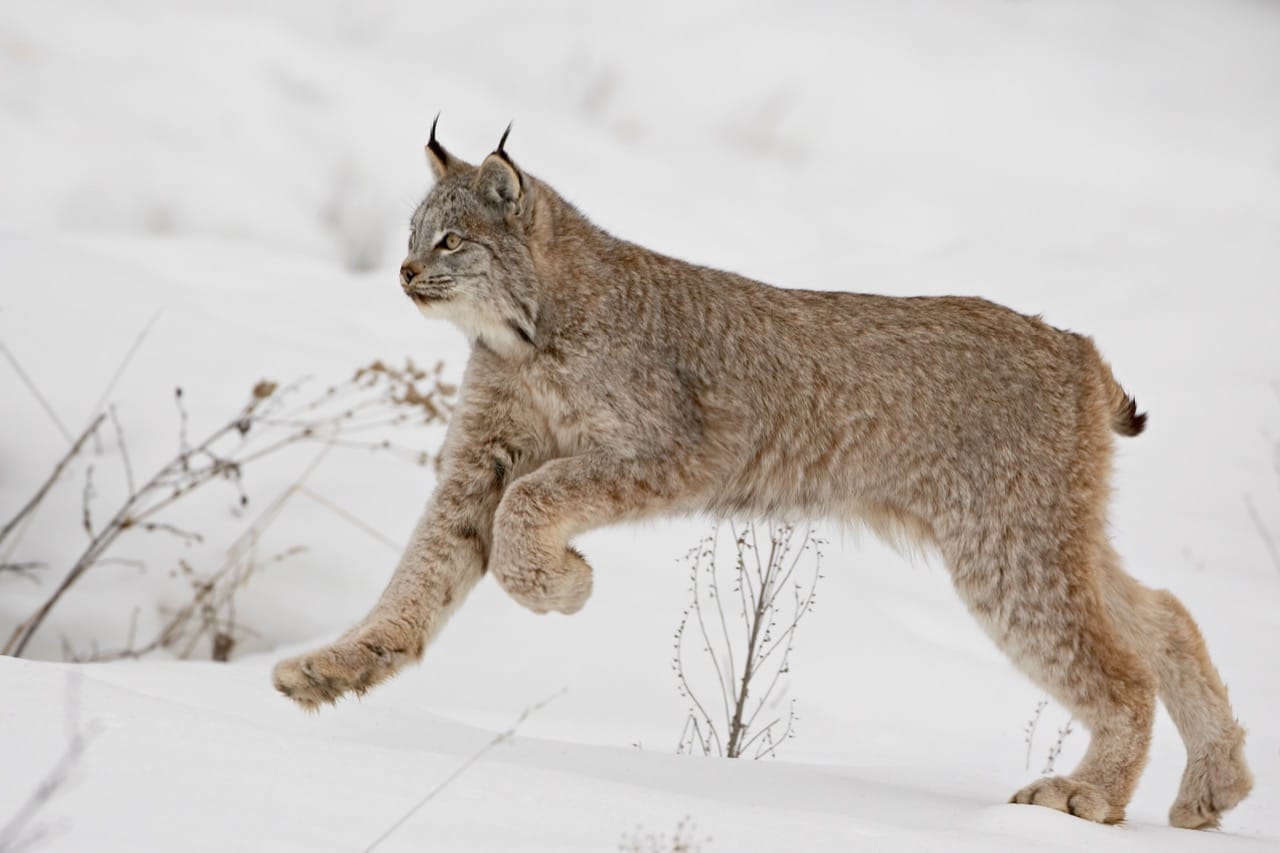The Eurasian lynx, an elusive and majestic creature, reigns as the largest lynx species and one of Europe’s most skilled terrestrial predators. With their striking appearance and secretive nature, these felines captivate the imagination of wildlife enthusiasts and scientists alike. The Eurasian lynx not only plays a crucial role in the ecosystem as a top predator but also embodies the wild spirit of Europe’s forested landscapes.
Characteristics / Physical Description
The Eurasian lynx (Lynx lynx) boasts a robust build, with long legs and large webbed and furred paws that act as natural snowshoes. Adults can weigh between 18 to 30 kilograms and reach lengths of up to 130 centimeters, not including a short, bushy tail of about 11 to 24.5 centimeters. One of their most distinctive features is the tufts of black hair on the tips of their ears and their ruff of fur that resembles a beard, giving them a somewhat imperious look. Their coat, thick and silvery-brown in winter, provides excellent insulation, while the shorter, redder summer coat helps with heat dissipation.
Taxonomy and Classification
The Eurasian lynx is classified under the family Felidae, which encompasses other felines. It is part of the genus Lynx, which includes other lynx species like the Canadian lynx, Iberian lynx, and the bobcat. The species has several subspecies that vary slightly in size and coloration, adapted to their specific regional environments.
Behavior and Social Structure
Primarily solitary, Eurasian lynxes are territorial animals. They use a variety of vocalizations, scent markings, and physical signs to communicate with one another, especially during the breeding season. Their territories can vary greatly in size, depending on the abundance of prey, from 20 square kilometers to more than 450 square kilometers.
Habitat and Distribution
The Eurasian lynx is found in forested areas across Europe and Asia, from Scandinavia and Eastern Europe to Siberia and Central Asia. They prefer dense forests with good cover and plentiful prey but can also adapt to rocky areas and even semi-desert regions.
Diet and Feeding Habits
This lynx is primarily a carnivore, with its diet heavily reliant on ungulates (hoofed mammals) such as deer and wild boar. It is an ambush predator, using stealth and patience to sneak up close before launching a swift attack on its prey. Smaller animals like hares, rabbits, and rodents also supplement their diet.
Breeding and Reproduction
The mating season of the Eurasian lynx occurs from January to April, with a gestation period of about 70 days. Females typically give birth to two to three kittens, which are born blind and helpless. The kittens stay with their mother for up to ten months, learning crucial survival skills including hunting techniques.
Relationship with Humans
Historically, the Eurasian lynx faced extensive hunting and habitat loss, leading to a severe decline in their population across Europe. Today, thanks to legal protection and rewilding efforts, their numbers are slowly recovering, although they still face threats from poaching and further habitat fragmentation.
Evolutionary History
The Eurasian lynx has a rich evolutionary history, which traces back millions of years when it shared a common ancestor with other members of the Lynx genus. Adaptations such as its powerful limbs and acute hearing have optimized it for a predatory lifestyle in challenging environments.
Use as Research Animals
While not commonly used in traditional research settings, the Eurasian lynx is often a focal species in ecological and conservation studies. Researchers study its habits and biology to better understand the dynamics of predator-prey relationships and the effects of human activity on large carnivores.

